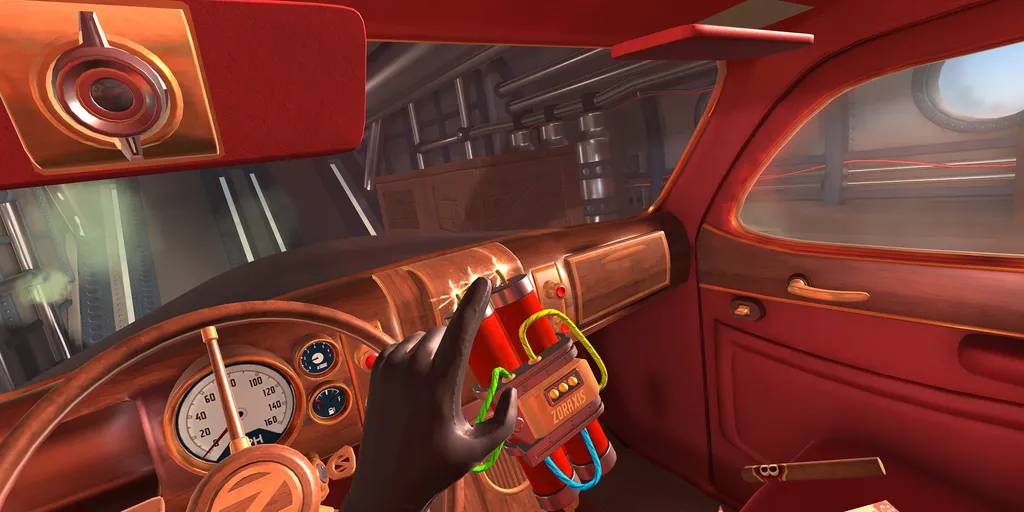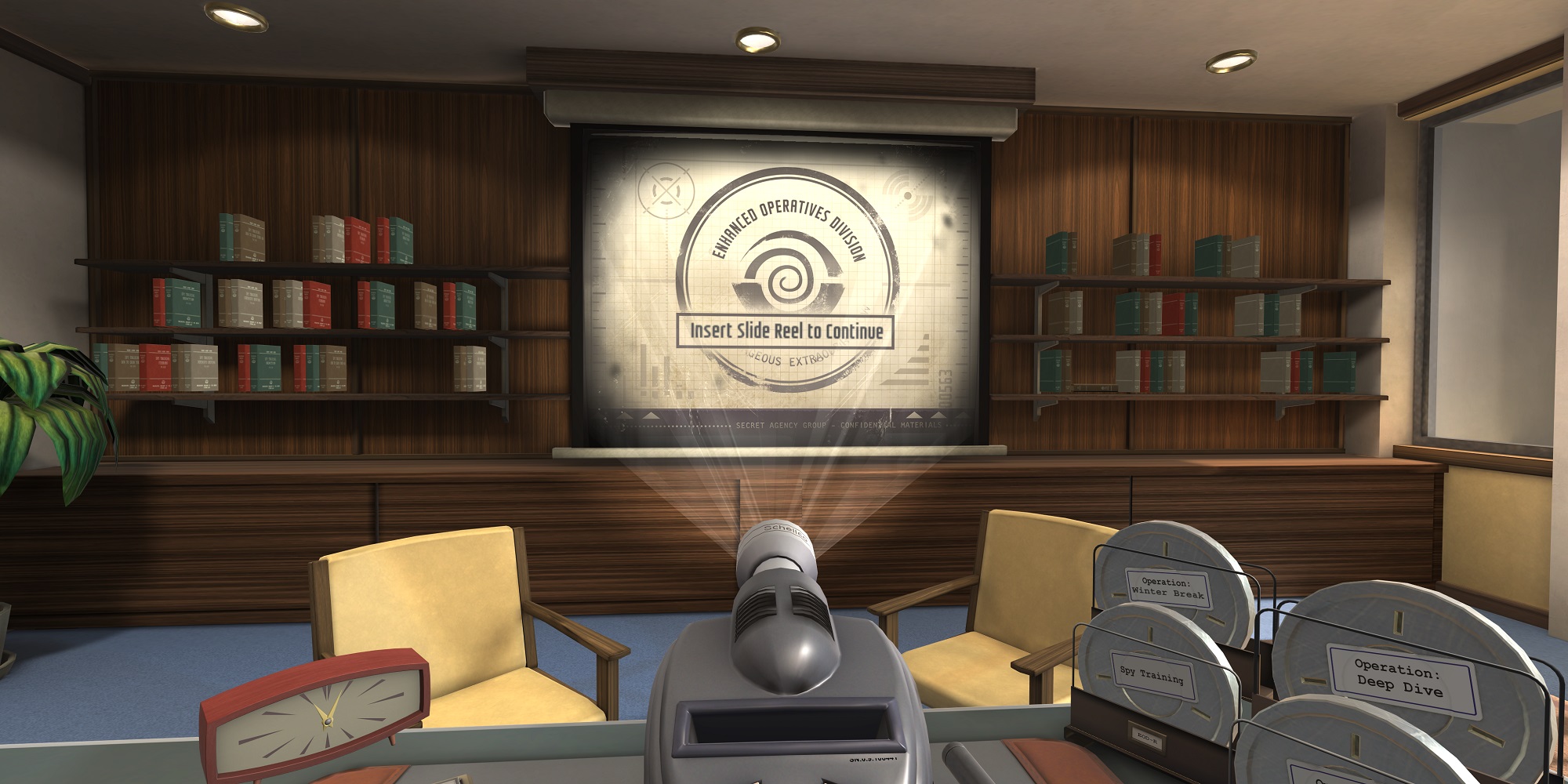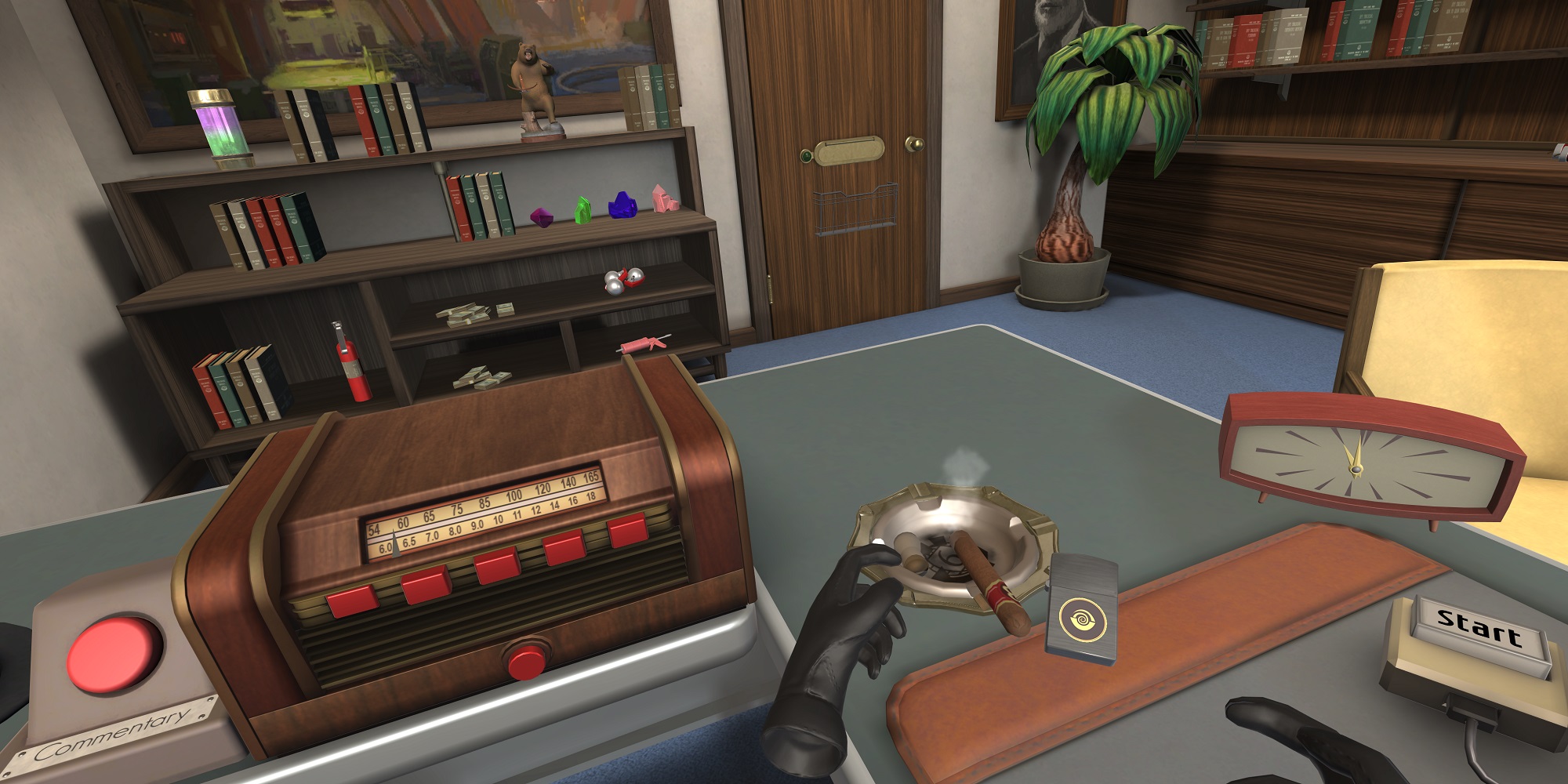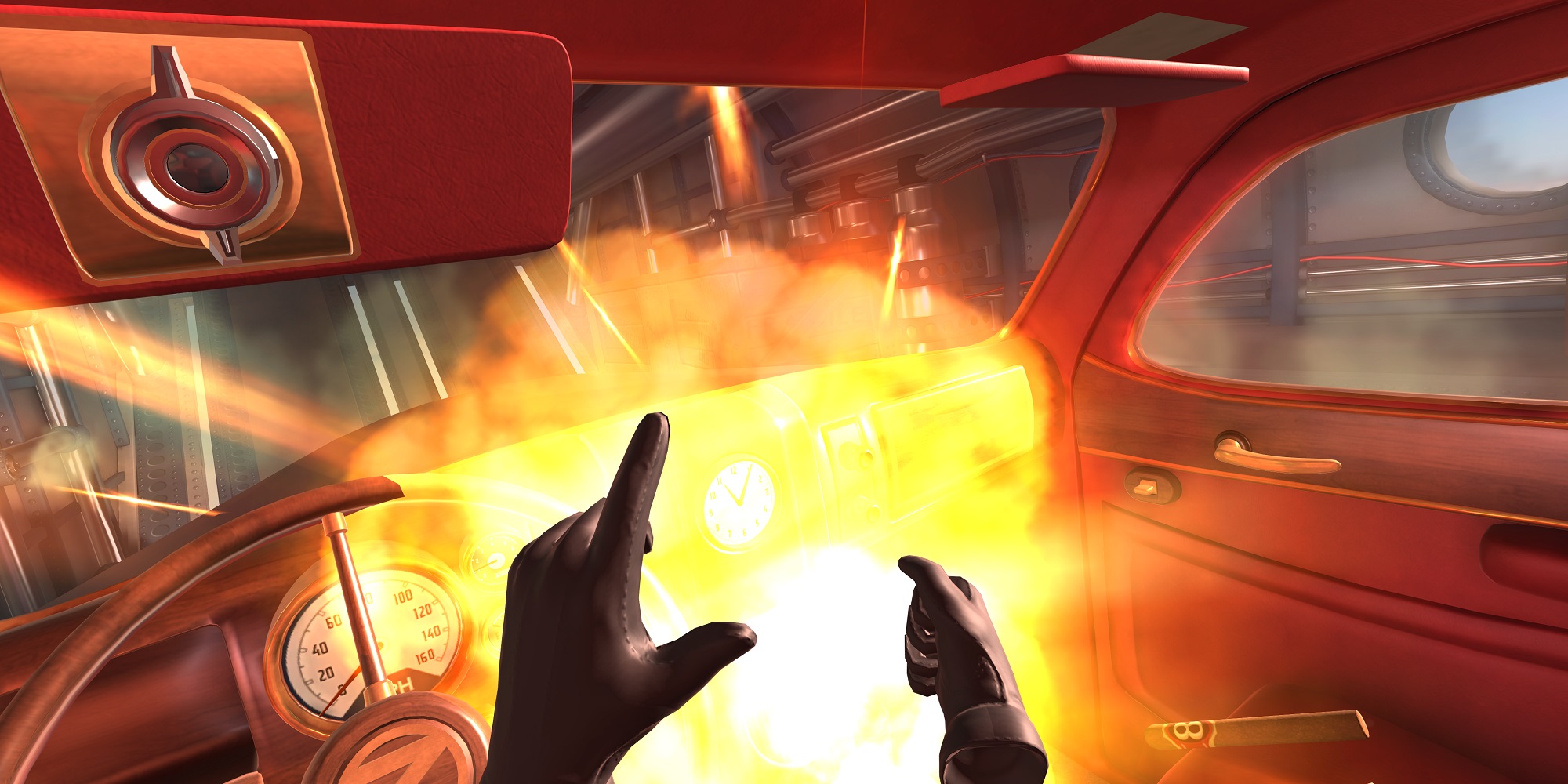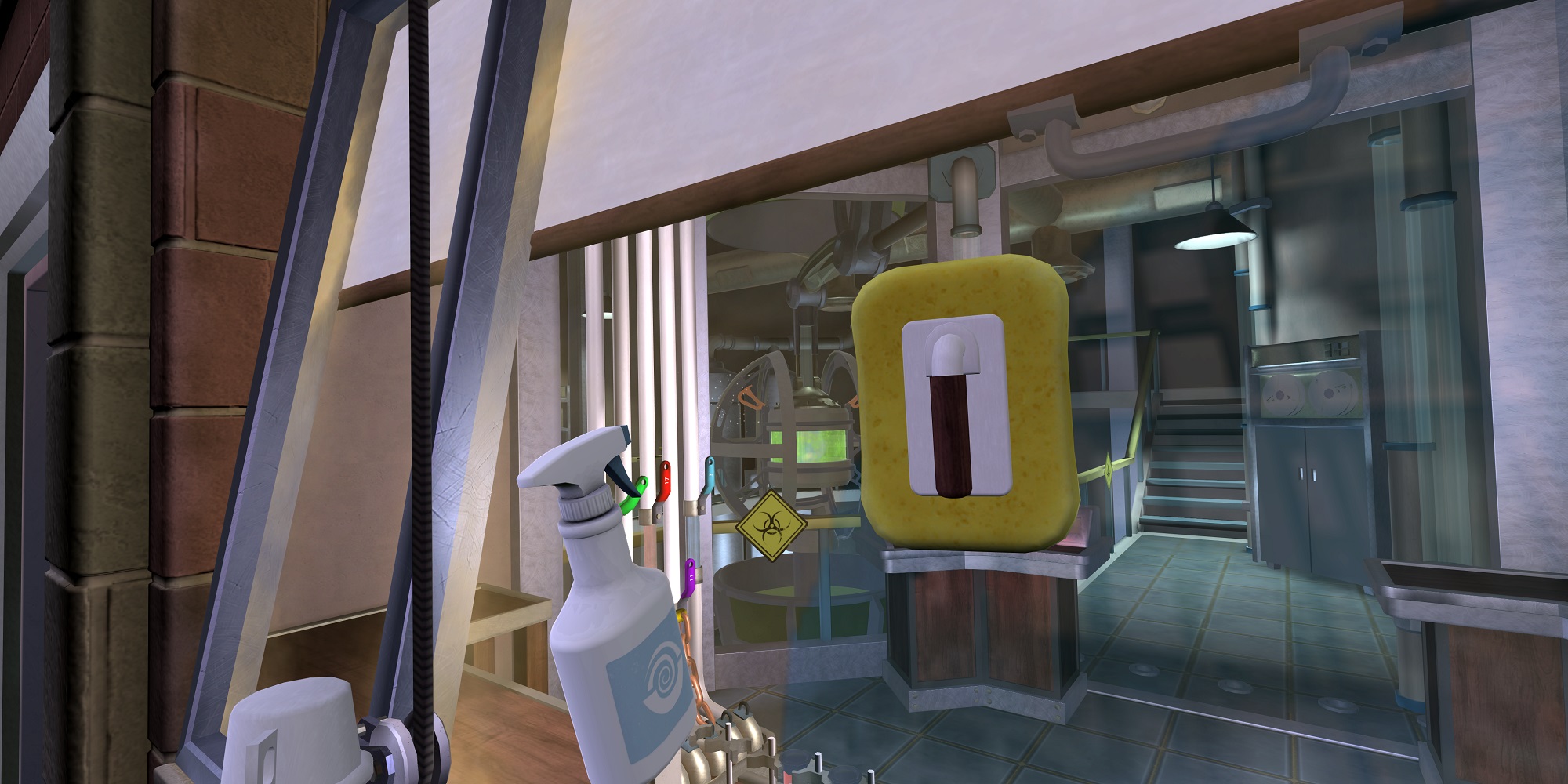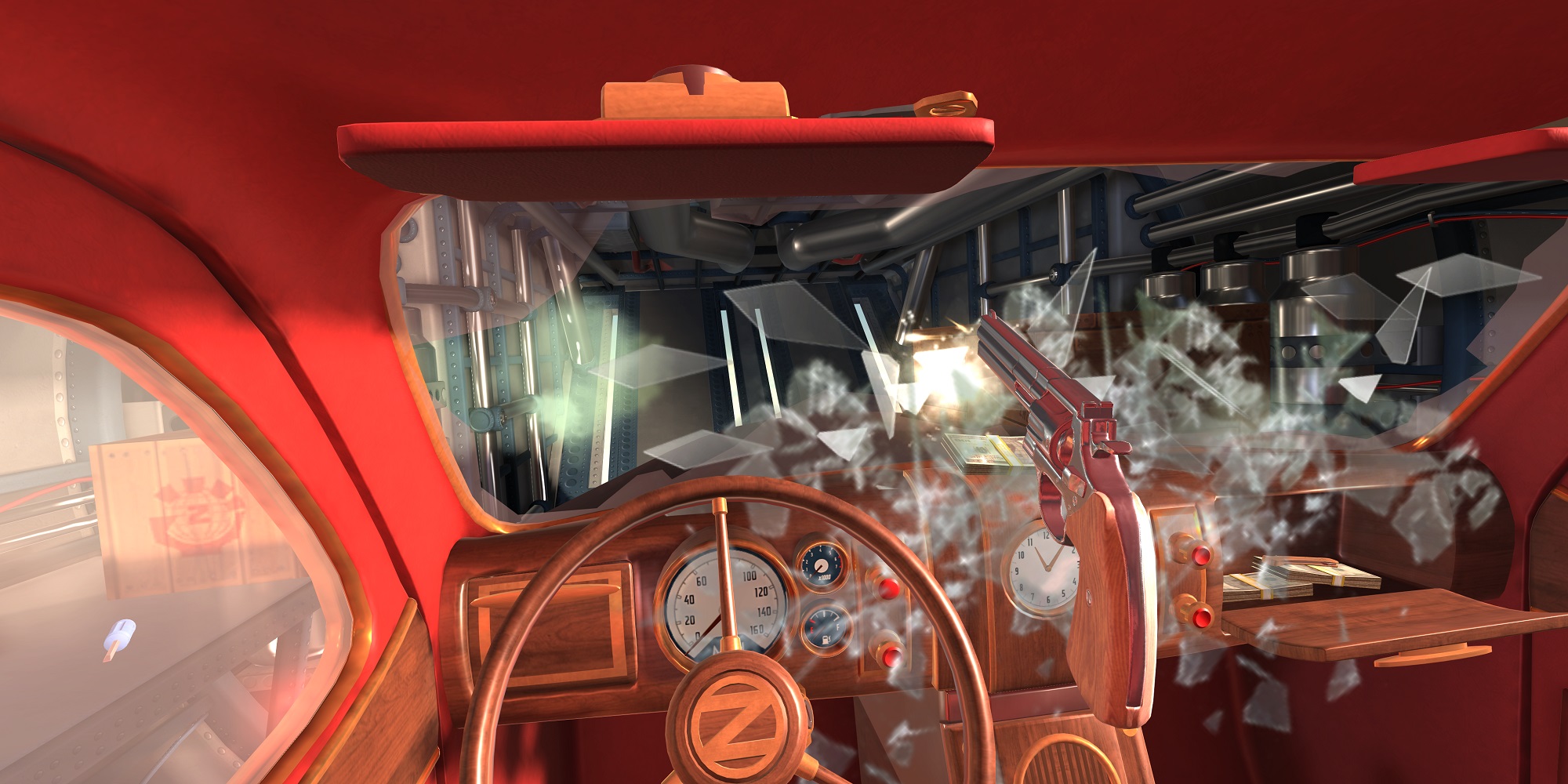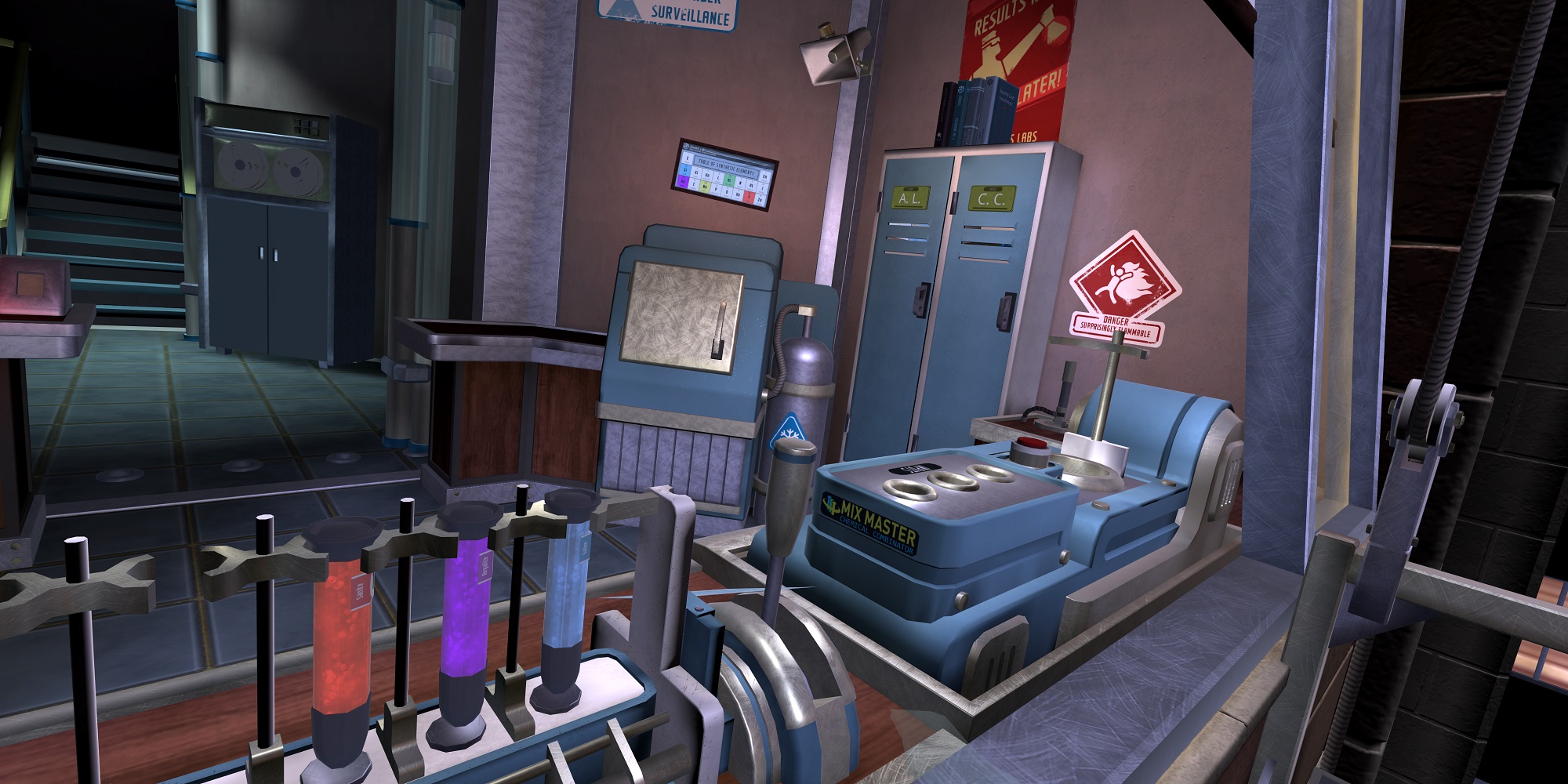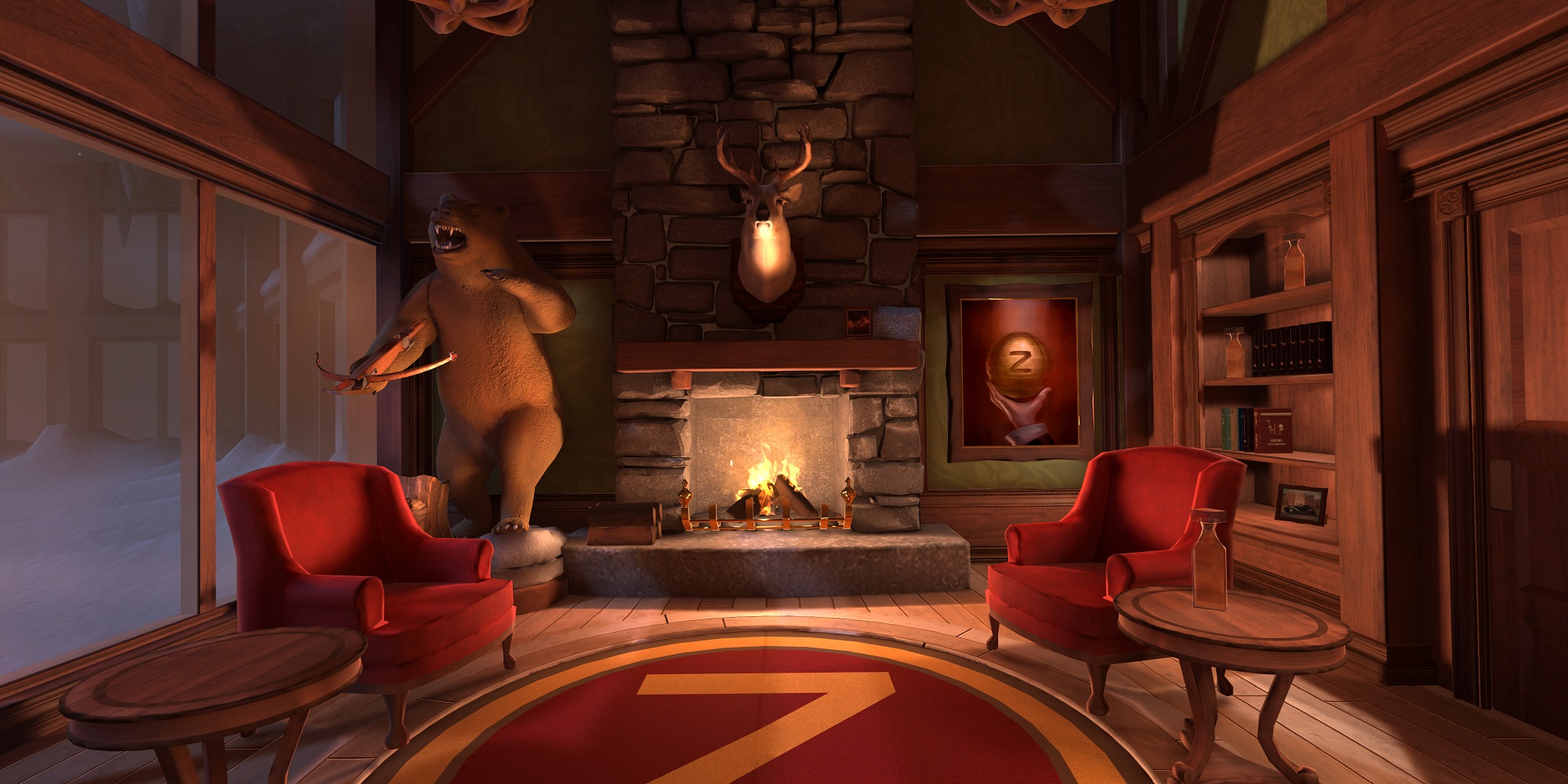With December 6 comes the release of I Expect You To Die by Schell Games, an escape the room-style experience that has players facing puzzles and dangers as a super spy. The game is coming for Oculus Rift, with the new Oculus Touch controllers, and PlayStation VR, and its PlayStation Move controls.
We spoke with Schell Games principals behind IEYTD: Marc Tattersall, the Project Director; John Kolencheryl, the Tech Director, and Shawn Patton, the Design director. Here is what they told us about how motion controls changed the design of the project and the specifics behind their “Brown Box” process.
Upload: Schell Games has a history of doing mostly children’s game. How has making a VR game been different than past titles?
Marc: The hardest part is that when you are working on a game, generally, you have something to point to. ‘I like this aspect of that game‘ or ‘I kind of like how this game does that.’ Because VR is so new, there really is no place to point to. We were inventing rules as we go, as everyone in VR was. Even when we are talking about what games sell well, it’s all so new that we just don’t know. So you are really taking a chance on a lot of what you do. You have to figure out what works. If we were building a first-person shooter, it would be really easy to just analyze existing, successful first-person shooters and make a determination about what we like and what we don’t like. Trying to develop a fun game on a moving technology that is constantly evolving is extremely complicated.
John: And just keeping up with cutting edge technology, from a technical standpoint, means you have to constantly upgrade the engine you are working with and just be in constant communication with the hardware folks, be it Oculus or Sony. Just making sure things work. Does your game work well with the changes they make to their API? From a technical standpoint, that is something we have to keep up with. Previously, on projects, we don’t have to do constant upgrades to the engine. There’s a certain amount a risk that adds. But on a VR project, you just have to let go of that and be ready to make upgrades on a frequent basis. Just so the games can run.
The other big thing is the framerate; just making 90 frames per second is something new. We have to make certain decisions around that. Making people sick in VR is not good. So that is something that we have made a lot of effort to maintain. So figuring out the minimum spec and making sure the game runs at 90 at that min spec, those were the decisions that were made from the get go.
Shawn: From a design standpoint, the newness of VR for the players is the big thing you need to keep in mind. When they are immersed in this new world, they can get overwhelmed very easily. They have some expectations about how some things work because it is very similar to the real world. ‘Of course I can pick this up; of course I can do that.’ Anytime you don’t support one of those actions, it chips away at their immersion. And so from a design standpoint, which things do we need to support, and how can we ease them into this new world, and how can we make sure they are not totally confused and instead have a good time.
Upload: And what about the challenges of making a game with motion controls?
Shawn: IEYTD started as a mouse-controlled game. Adding Oculus Touch was awesome, because it’s way more immersive. You feel yourself there with the hands. But at the same time, it did cause us to have to rethink the design, the tech, and the art decisions we’ve made.
John: Motion controls had a huge impact. Suddenly you had levels where you want players to be able to reach things with their hands and not rely on Telekinesis. That advocated level design quite a bit.
Marc: At the same time, having Telekinesis, allowed us to build levels we not be able to build with just Touch. We want to be in a larger room. We don’t want you always be sitting at a desk, only working with things on the desk. It gives us a huge amount of flexibility in puzzle design and how we build levels.
Upload: Was it difficult developing with prototypes of Touch?
Marc: As Shawn mentioned, we originally built it just for the mouse, but even the headset had gotten higher resolution, which means we want to have art look better. And having Touch controls that changed — there’s a new button on the newer version, where there’s an option button. And being able to react to all those changes is certainly very challenging.
Shawn: We got one pair of Touch controllers very early on. But we never had access to as many pairs as we liked. So most of our team did not have a Touch. And if that one pair breaks, you’re in trouble. So when we finally had two pairs, one of them would have to go to a show for demos. You always had to carry it on the plane with you. You don’t want to risk checking them in the luggage.
Upload: How much iteration and tweaking of the controls did you have to do?
Shawn: So at the start of IEYTD, when you are first training in the office, we actually have many different versions of that. We have a version for the mouse. We have a version of the Xbox controller. We have a version for Touch. There is a version for the Dualshock controller and we have a version for the PlayStation Move. And so, first of all, just making a training sequence that is flexible on the tech side to make the creation of these five different versions possible was key.
John: We had to find the right order to teach people things. When you are using the mouse or the controller, you are always using TK. Where as, when you have the Touch, we didn’t want to overwhelm you. So we teach you to do things in your hands at first, then layer on the TK. So the order you learn things is different.
Marc: Also really important, because we support five different controllers, we need to make sure that in the game that we never ask you to do anything that can’t be do with all the controllers. That gets really tricky with the mouse, because you can’t really flip things over. So there are a lot of creative and technical challenges to make sure that you are playing the same puzzle on a mouse as somebody who is doing it with two hands.
Shawn: It is also important to us because we know that people may be playing this on systems that don’t have motion controllers and we want them to be able to enjoy it just as much. Even the Speedruns, we had testers on our team play it with all the controllers. What are times that would be appropriate with all the controllers.
Marc: We do think that Touch and Move controllers are certainly the strongest. It’s our game at it’s best. But we do want to make sure people do enjoy playing on the other controllers as well. That was definitely one of the hardest challenges on the projects.
Upload: What about tweaking the spaces or layout of objects so they are intuitive for motion controls?
Marc: We had a way to visualize, in our editor, where the average arm-span can reach. So we wanted to make sure that enough interesting items were within that sphere of grab-ability. We would rearrange some items. In the original desk, it didn’t have drawers. We added the drawers and made sure you can get some cool stuff over time.
Shawn: One of the other challenges with touch — not necessarily directly with the act of grabbing — but because we had a very forward-facing experience. And because you’re tracked with two cameras in front of you, it actually dictated entirely how we built levels. Almost all of your actions are in front of you. We don’t try to go more than 90 degrees to the side. And even when it comes to reaching things on the ground, your Touch controller can go behind your leg and lose tracking that way.
Marc: Going back to what makes Telekinesis great for our game, if some reason you are having a hard time grabbing things or if your cameras aren’t set up well, you can always use TK to grab something that you might be having a tracking difficulty with. So it enhances gameplay and also gets us out of sticky situations. You’ve got to be careful leaning. Using Telekinesis to get to the glove box is sometimes safer than trying to reach over with your hand. We’ve seen a few people fall out of their chair trying to grab something far away.
Shawn: You can’t lean on virtual things. You got to remember that.
Upload: Did the choice of making an Escape the Room style game come from the prospect of using Touch?
Marc: We did build the original game with mouse, so at the moment of conception of the game, it wasn’t designed to be a touch controller game. However, after the first car level, every level we built out after that, was specifically designed for Touch controllers and making sure that you have very good, close interactions that are fun, interesting interactions, where you are pulling things in various ways, unscrewing, or turning. So the first level was really the demo level, which we did convert to be more Touch-friendly. But all the subsequent levels were specifically designed for Touch and built that way. One of the processes Shawn used we called “Brown Boxing.” It worked at really great for us.
Shawn: We did some physical prototypes using cardboard boxes. We would arrange them and sit down naive playtesters and have them reach things, see what they noticed. It was very quick to reconfigure because we were using duct tape and cardboard boxes.
John: And if there was an object common enough, we would find it in the office.
Shawn: If we need a fire extinguisher, we put a fire extinguisher. The other benefit to that is that people would do things that we hadn’t thought of. And we would write those down and handle those. That was a really fun and quick, organic way to find those things.
The thing about Escape the Room games is that you are using objects. You know that it’s a puzzle. What we wanted to do in our games is, yes, you are trying to escape or accomplish your goal, but we also wanted things to work the way that you expect them to work. I don’t solve a puzzle cube to get the key. I find the key in the car where I might find the key in a regular car. That was important to us, making it more of a believable situation.
Upload: How long was the brown box iteration process?
Shawn: The one we spent the most time with was the sub level, which you see briefly in the latest trailer, so I feel I’m okay to mention it. We probably had that set up for a week and a-half, maybe two weeks. One of our artists, Tyler, and I did the construction. We ran our immediate team through it first, then branched out to Schell people that weren’t on the team. We had at least two completely naive people try it. At that stage, it’s one half imagination and one half Dungeons and Dragons. ‘You pulled that lever? Then this happens!’ It’s sort of acting it out as they play it. But it was still a great way to get some insight.
The final level ended up being very similar to what the brown box actually was. And the iteration time is so much faster. Just have Shawn or someone move a box two inches to the left. Rather than go, stop the playtest, go back to art, have them change it, make a new build.
Upload: With the 60s James Bond feel and the motion controls, this is not a typical game. What response are you expecting from players?
Marc: I wasn’t around for the very early conception of the project, but it’s my understanding that the reason why it’s an Escape the Room, Bond-type Spy-themed game, is that in the early process of prototyping, there wasn’t touch controls, and we didn’t want to move the character. So they were thinking how can you still feel awesome, but we stuck in a certain spot? And Spies do this all the time.
Our namesake for I Expect You To Die is that scene from Goldfinger, where although James Bond is strapped to a table and about to be cut in half with a laser, by using his wits, he’s able to get out of that situation. So I think that Spy theme fits very well because they are always in these types of situations because they need to figure out an escape or figure out where the bomb is. And by making it an older spy game, it keeps it kind of light and fun. It allows us to have out Jared. It allows us to use all these old tropes from movies, and parodies. It keeps it entertaining.
Shawn: Because VR is so new, because it is exciting, when people are in it, they want to experiment. They want to have fun. They want to try things you couldn’t do in real life. So having this environment where I can knock whole bunch of stuff over, I’m lighting things on fire, I can blow things up, it allows them to have fun, act out these fantasies, but also progress in the goal of getting out of the room. It may not be completely obvious why it fits so well, as soon as you try it, you realize it fits.
John: VR is such a powerful medium. It’s like you are there. And for someone who is terminally ill and can’t go anywhere, this can be a life changing experience.
Marc: Even outside of games. I saw a talk where they were talking about movies and how if a character in a movie looks at you in the eye and breaks that wall, because you understand that you are not there. But when you are in VR you truly feel you’re there. I experienced this myself in IEYTD. I go to hit the gas to get the car out of the plane, I actually put my foot down on the floor. I’ve seen people try to stomp the scorpions. I’ve seen people fall out of their chair. There just is no other medium that immerses you so much that you absolutely forget where you really are.

